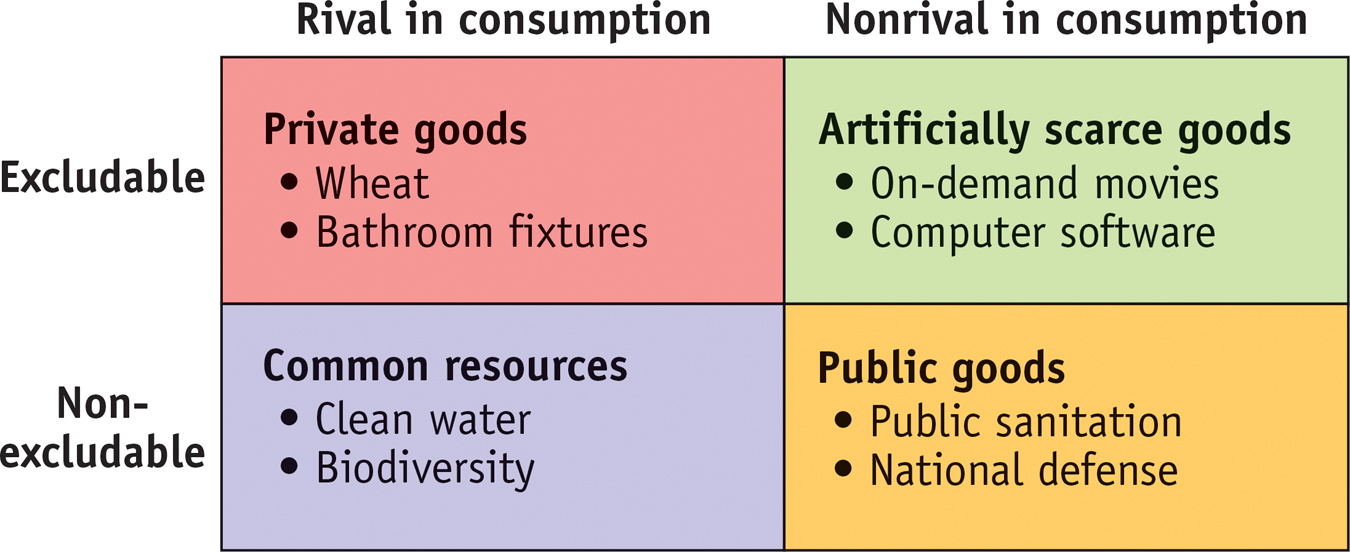Characteristics of Goods
Goods like bathroom fixtures or wheat have two characteristics that, as we’ll soon see, are essential if a good is to be efficiently provided by a market economy.
A good is excludable if the supplier of that good can prevent people who do not pay from consuming it.
They are excludable: suppliers of the good can prevent people who don’t pay from consuming it.
A good is rival in consumption if the same unit of the good cannot be consumed by more than one person at the same time.
They are rival in consumption: the same unit of the good cannot be consumed by more than one person at the same time.
A good that is both excludable and rival in consumption is a private good.
When a good is both excludable and rival in consumption, it is called a private good. Wheat is an example of a private good. It is excludable: the farmer can sell a bushel to one consumer without having to provide wheat to everyone in the county. And it is rival in consumption: if I eat bread baked with a farmer’s wheat, that wheat cannot be consumed by someone else.
When a good is nonexcludable, the supplier cannot prevent consumption by people who do not pay for it.
But not all goods possess these two characteristics. Some goods are nonexcludable—the supplier cannot prevent consumption of the good by people who do not pay for it. Fire protection is one example: a fire department that puts out fires before they spread protects the whole city, not just people who have made contributions to the Firemen’s Benevolent Association. An improved environment is another: the city of London couldn’t have ended the Great Stink for some residents while leaving the river Thames foul for others.
A good is nonrival in consumption if more than one person can consume the same unit of the good at the same time.
Nor are all goods rival in consumption. Goods are nonrival in consumption if more than one person can consume the same unit of the good at the same time. TV shows are nonrival in consumption: your decision to watch a show does not prevent other people from watching the same show.
Because goods can be either excludable or nonexcludable, rival or nonrival in consumption, there are four types of goods, illustrated by the matrix in Figure 17-1:

Private goods, which are excludable and rival in consumption, like wheat
Public goods, which are nonexcludable and nonrival in consumption, like a public sewer system
Common resources, which are nonexcludable but rival in consumption, like clean water in a river
Artificially scarce goods, which are excludable but nonrival in consumption, like on-
demand movies on Netflix
There are, of course, many other characteristics that distinguish between types of goods—